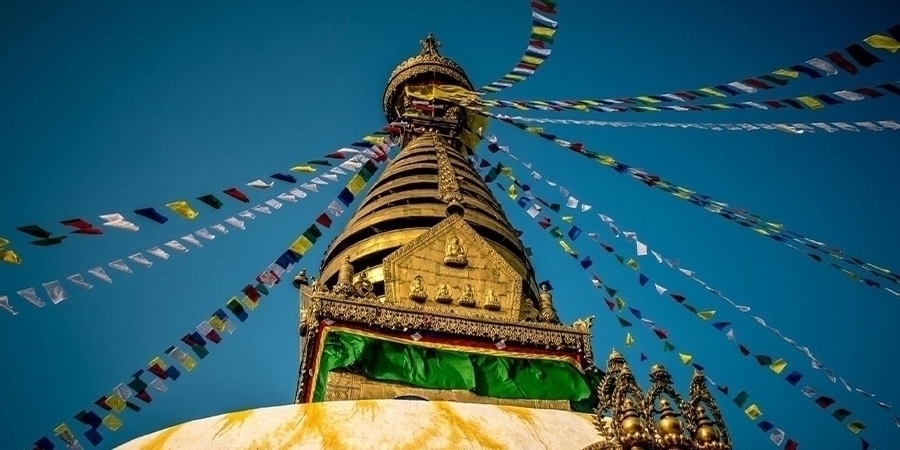
Kathmandu, once a bustling capital, remains a treasure trove of heritage, offering a rich tapestry of history, spirituality, and culture. The city is home to numerous UNESCO World Heritage sites, ancient temples, and architectural marvels that connect visitors to Nepal's deeply rooted Hindu and Buddhist traditions. With colorful festivals, intricate carvings, and timeless rituals, Kathmandu's cultural essence greets every visitor, offering a multifaceted experience of the country's vibrant past and present.
Among the must-see landmarks are Bhaktapur Durbar Square, Swayambhunath Stupa, and Pashupatinath Temple—each a testament to Nepal's artistic and spiritual heritage. These historic monuments are not just masterpieces of architecture but also hold deep religious significance, drawing pilgrims and travelers alike. Exploring these sites offers a fascinating journey through Kathmandu's ancient roots and its dynamic, modern-day culture, making it a dream destination for history and culture enthusiasts.

Bhaktapur Durbar Square articulates traditional Nepalese architecture and skillful craftsmanship eloquently. This historic square is a popular ensemble of ancient palaces, temples, and courtyards and consists of four major areas: Durbar Square, Taumadhi Square, Dattatreya Square, and Pottery Square.
| Visitor Type | Entrance Fee (NPR) |
|---|---|
| Foreign Nationals | 1,800 |
| SAARC Nationals | 500 |
| Chinese Nationals | 500 |
| Nepali Citizens | Free |
| Children under 10 (All Nationalities) | Free |
The Swayambhunath Stupa, better known as the Monkey Temple, is one of the oldest and most sacred religious sites in Nepal. Offering panorama views of the Kathmandu Valley, it is an essential stop to take in Nepal's spiritual atmosphere.
| Visitor Type | Entrance Fee (NPR) |
|---|---|
| Foreign Nationals | 200 |
| SAARC Nationals | 50 |
| Nepali Citizens | Free |
| Children under 10 (All Nationalities) | Free |
Pashupatinath Temple is one of the biggest Hindu pilgrimage centers and a UNESCO World Heritage site, while Lord Shiva is its deity. The temple is not only used for worship purposes but is also one of the sacred rituals of observing cremation along the Bagmati River.
| Visitor Type | Entrance Fee (NPR) |
|---|---|
| Foreign Nationals | 1,000 |
| SAARC Nationals | Free |
| Nepali Citizens | Free |
| Children under 10 (All Nationalities) | Free |
Kathmandu Durbar Square, known as Hanuman Dhoka, has served as the royal residence of Nepali monarchs since the 15th century. It's filled with palaces, courtyards, and temples. This is a vital center from which the history of Nepal's royalty may be traced.
| Visitor Type | Entrance Fee (NPR) |
|---|---|
| Foreign Nationals | 1,000 |
| SAARC Nationals | 150 |
| Chinese Nationals | 300 |
| Nepali Citizens | Free |
| Children under 10 (All Nationalities) | Free |
It stands tall at 144 feet and is one of the tallest statues of Lord Shiva in the world. This giant-sized statue is located outside Kathmandu, hence giving a great view of the valley.
Kala Bairav Statue Located inside Kathmandu Durbar Square, this is said to be the fearful form of Lord Shiva. This huge stone statue is one of the major places of interest for Hindu followers.
An ancient square sandwiched between Thamel and Jyatha, Thahiti Chowk boasts an exquisitely crafted stupa and incorporates several significant temples into its plan. Given the surroundings of the square, one would still be able to find it one of the city's best-kept secrets, far away from all the hustles and bustles that prevail in this modern metropolis.
The Changu Narayan Temple is the oldest temple in Nepal, dedicated to Lord Vishnu, a UNESCO World Heritage site. Situated on the top of a hill surrounded by a forest, the temple offers one a glimpse of ancient Nepal and its religious traditions.
| Visitor Type | Entrance Fee (NPR) |
|---|---|
| Foreign Nationals | 300 |
| SAARC Nationals | 100 |
| Chinese Nationals | 200 |
| Nepali Citizens | Free |
| Children under 10 (All Nationalities) | Free |
The Boudhanath Stupa is a tall representative of Buddhism in Nepal, ranking among one of the largest Buddhist stupas in the world. Monasteries and shops still line this spiritual center that is frequented by monks and travelers alike, looking for peace.
| Visitor Type | Entrance Fee (NPR) |
|---|---|
| Foreign Nationals | 400 |
| SAARC Nationals | 100 |
| Chinese Nationals | 200 |
| Nepali Citizens | Free |
| Children under 10 (All Nationalities) | Free |
Budhanilkantha lies at the foot of Shivapuri Hills, and it is recognized for its reclining statue of Lord Vishnu. The statue is situated in a pool of water, and it is a great pilgrimage site for Hindus.
The historic monuments of Kathmandu are the windows onto Nepal's rich cultural and religious heritage. From the chaotic squares to the spiritual tranquility found in the temples, here are ten salient landmarks which you will definitely remember. In fact, these are the top ten sites that epitomize Kathmandu.
